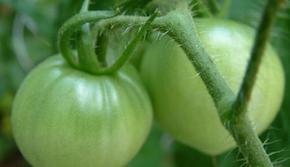“Ask the Plant and Pest Professor” is compiled from phone and email questions asked the Home and Garden Information Center (HGIC), part of University of Maryland Extension, an educational outreach of the University of Maryland.
Question #1: I have a weeping cherry tree that has some holes in the trunk. Sap is dripping out of them and is even dripping to the ground. So far the tree looks pretty healthy. Could this be some sort of insect infestation and what can I do to help the tree? This tree has been in my front yard since I bought my house many years ago.
Answer#1: The oozing sap is called ‘gummosis’ and generally happens any time an injury occurs to the bark of a tree. Gummosis can be caused by many factors such as insects, mechanical damage, diseases, or weather. Pushing out sap is the trees attempt to protect itself by flushing out pathogens or insects. Ornamental cherries are prone to both borers, which are insects that bore into the tree, and canker diseases. Both of these conditions are serious and unfortunately can’t be cured once they attack the trunk of a tree. However, in many cases the tree continues to do okay and can remain viable for a few years. If the tree has borers or a canker disease it will start losing branches and then will eventually have to be removed. These trees are generally not long-lived and have an average lifespan of about 25 years. For additional information on ornamental fruit trees, go to our website and look for publication HG 93 IPM Series: Ornamental Fruit Trees found under ‘publications’.
Question #2: In the corner of the ceiling on my front porch there is a papery, honeycomb like, circular shaped nest. I see paper wasps flying in and out of it. How concerned should I be about paper wasps and should I do something to get rid of them?
Answer #2: Paper wasps tend to be less aggressive and threatening than yellowjackets. The nests are usually fairly small, only a few inches in diameter, so they do not contain as large a number of wasps as found in yellowjacket nests. But if the nest is in a frequently used area, control is warranted because they will sting if they feel threatened. Active nests can be sprayed with a registered wasp and hornet spray. Look for one that is labeled as non-staining and can be sprayed from a distance. Treat in the evening or early morning. Paper wasp nests located in non-frequented areas should be left alone. The wasps prey on caterpillars and are considered to be beneficial.
Question #3: My husband and I planted 4 beefsteak tomato plants in late April. They are producing tomatoes but none are turning red. Last year at this time we were already eating vine ripened tomatoes. What is going on?
Answer #3: Patience may be the key word this year. Tomatoes and some other warm-season vegetables are behind their normal schedule. In April, soils were not warm enough for tomato plants to grow. Root growth does not occur until soil temperatures reach about 65 degrees F. Do not fret there is still plenty of time for your tomatoes to ripen. Gardeners need to be flexible in their expectations because every year is a different year in the garden.
To ask a home gardening or pest control question or for other help, go to https://extension.umd.edu/hgic Or phone HGIC at 1-800-342-2507, Monday through Friday, 8 a.m. to 1 p.m. Follow us on Facebook and Twitter.



Lung Shepherd says
Thanks, The late 2000 have brought forth the urge of using natural stuff based remedies rather than relying over the toxic chemical based products. This however, applies to pest control as well. Considering the heinous side effects of using chemical based pest control solutions, the natural ones are both effective and free from any kind of lethal side effects. Using pest management products from https://www.hygeanatural.com/ can really help you play safe and get rid of the same once for all.